Pierluigi Tuveri
Analysis of "User-Specific Effect" and Impact of Operator Skills on Fingerprint PAD Systems
Jul 18, 2019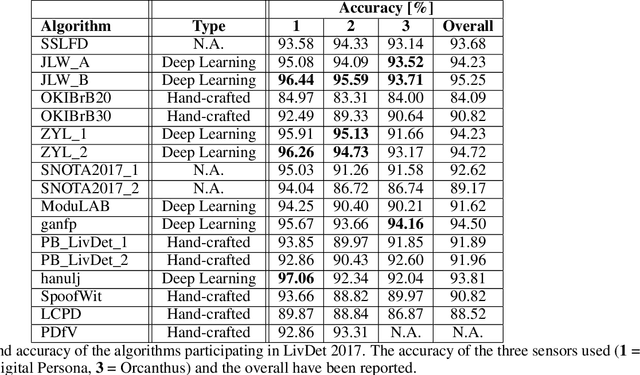
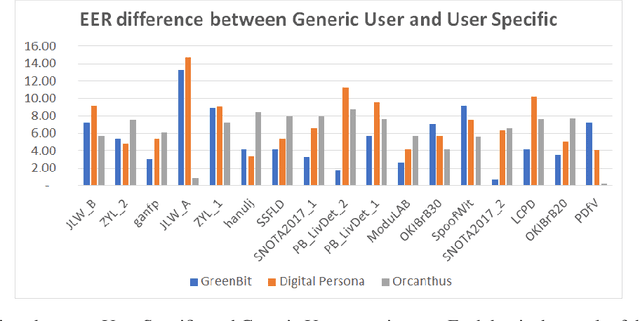

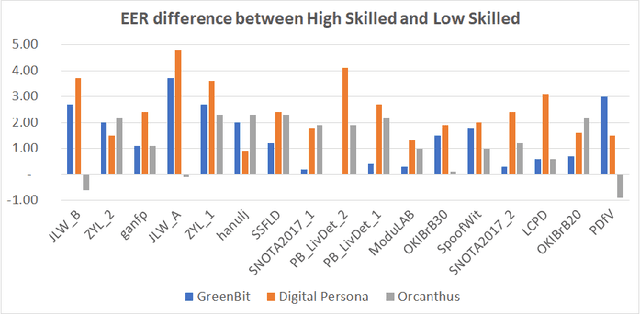
Abstract:Fingerprint Liveness detection, or presentation attacks detection (PAD), that is, the ability of detecting if a fingerprint submitted to an electronic capture device is authentic or made up of some artificial materials, boosted the attention of the scientific community and recently machine learning approaches based on deep networks opened novel scenarios. A significant step ahead was due thanks to the public availability of large sets of data; in particular, the ones released during the International Fingerprint Liveness Detection Competition (LivDet). Among others, the fifth edition carried on in 2017, challenged the participants in two more challenges which were not detailed in the official report. In this paper, we want to extend that report by focusing on them: the first one was aimed at exploring the case in which the PAD is integrated into a fingerprint verification systems, where templates of users are available too and the designer is not constrained to refer only to a generic users population for the PAD settings. The second one faces with the exploitation ability of attackers of the provided fakes, and how this ability impacts on the final performance. These two challenges together may set at which extent the fingerprint presentation attacks are an actual threat and how to exploit additional information to make the PAD more effective.
LivDet in Action - Fingerprint Liveness Detection Competition 2019
May 02, 2019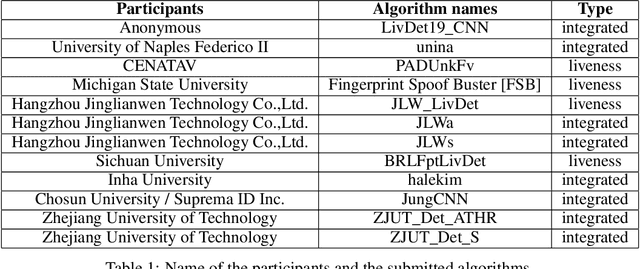
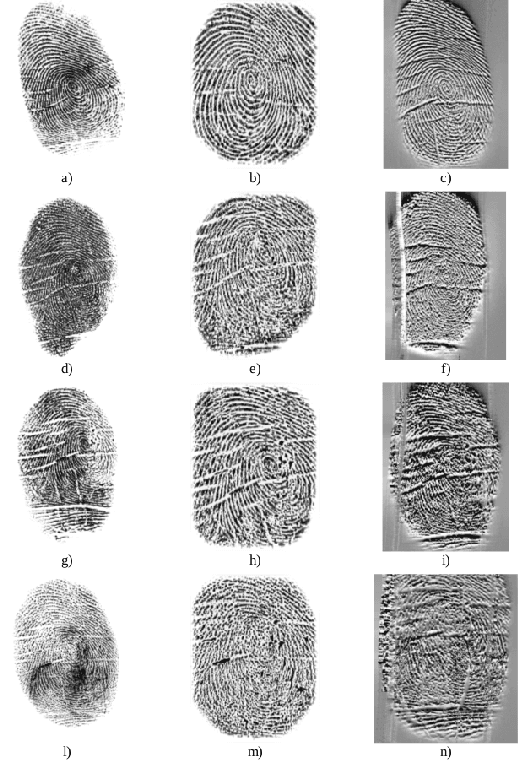

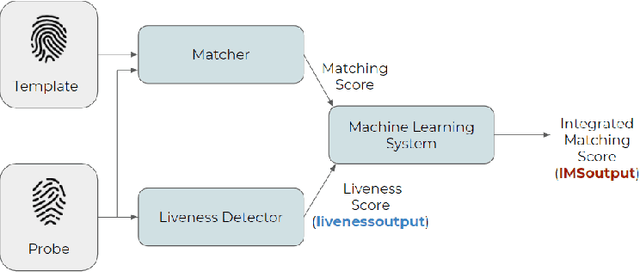
Abstract:The International Fingerprint liveness Detection Competition (LivDet) is an open and well-acknowledged meeting point of academies and private companies that deal with the problem of distinguishing images coming from reproductions of fingerprints made of artificial materials and images relative to real fingerprints. In this edition of LivDet we invited the competitors to propose integrated algorithms with matching systems. The goal was to investigate at which extent this integration impact on the whole performance. Twelve algorithms were submitted to the competition, eight of which worked on integrated systems.
LivDet 2017 Fingerprint Liveness Detection Competition 2017
Mar 14, 2018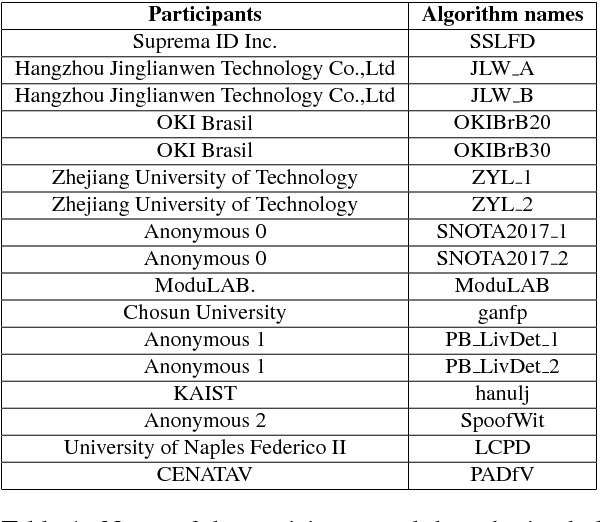
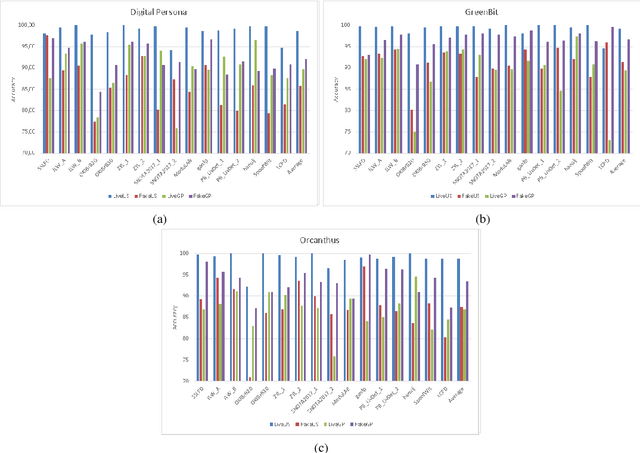


Abstract:Fingerprint Presentation Attack Detection (FPAD) deals with distinguishing images coming from artificial replicas of the fingerprint characteristic, made up of materials like silicone, gelatine or latex, and images coming from alive fingerprints. Images are captured by modern scanners, typically relying on solid-state or optical technologies. Since from 2009, the Fingerprint Liveness Detection Competition (LivDet) aims to assess the performance of the state-of-the-art algorithms according to a rigorous experimental protocol and, at the same time, a simple overview of the basic achievements. The competition is open to all academics research centers and all companies that work in this field. The positive, increasing trend of the participants number, which supports the success of this initiative, is confirmed even this year: 17 algorithms were submitted to the competition, with a larger involvement of companies and academies. This means that the topic is relevant for both sides, and points out that a lot of work must be done in terms of fundamental and applied research.
 Add to Chrome
Add to Chrome Add to Firefox
Add to Firefox Add to Edge
Add to Edge